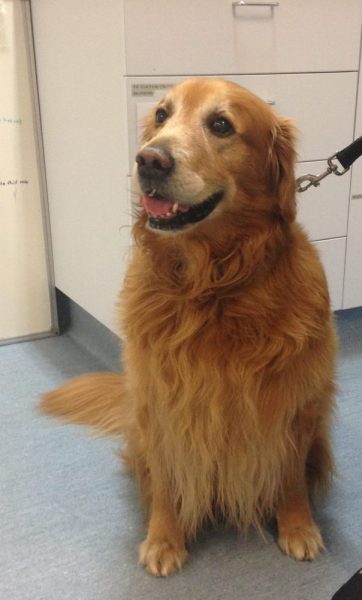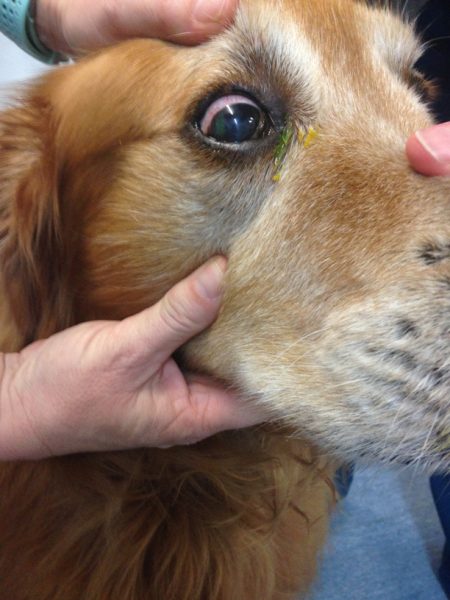Murphy’s chemo
By Helen Burns | Dated June 24, 2021 | 0 Comments
Right at the end of April the […]
By Helen Burns | Dated July 21, 2018
In the course of a day it’s not unusual for a dog or cat to bound around the house and yard, past shrubs and rocks, trees and pot plants, sometimes disturbing resting cats or stink bugs. So it’s not surprising really, that scratches to the surface of the eye (corneal ulcers) are a fairly common presentation here at Gordon Vet.

The gorgeous Sherlock
The gorgeous Sherlock came in this afternoon after having a weepy eye for the past couple of days. On examination of his eye, we found a corneal ulcer. His tear production was fine and his eyelids and eyelashes were just perfect! So, we suspect that he has knocked his eye on something, which scraped his right eye. Sherlock was particularly brave, because with his ulcer, the edges were unhealthy and needed to be debrided. So, under local anaesthetic eye drops, brave Sherlock sat still and let us peel off the unhealthy cornea to leave a healthier ulcer that will hopefully heal quickly.

Sherlock staying still while his ulcer was debrided
So what is a corneal ulcer exactly?
The cornea is the clear outer surface of the eye. It both protects the inner eye and provides the majority of the focusing required for vision. It’s a highly specialised and important tissue, and when damaged, it needs immediate attention. Squinting in one eye, a watery eye, or an eye that is cloudy or red can all be signs that your pet may have a corneal ulcer. The cornea has a particularly high concentration of nerves, as you would be aware of when you get a grain of sand in your own eye. Ouch ! So, it’s not surprising that corneal ulcers are very painful.
To diagnose an ulcer, we aim to both visualise the ulcer and also identify any underlying causes for the ulcer that may need their own treatment too. In cats, there is often the involvement of herpesvirus, which directly damages the corneal surface. Particular breeds of dog may suffer from eyelids that roll in and cause the eyelashes to rub on the surface of the eye, or some dogs just randomly grow extra eyelashes where they don’t belong. We also frequently see keratoconjunctivitis sicca, commonly known as dry eye, in which there is inadequate tear film to keep the cornea moist and healthy. Of course, foreign bodies, scratches from the carpet, plants, a foe, and chemicals such as the spray from stink bug and soap and all regular causes of corneal ulcers in our four legged friends.

The green stain highlights Sherlock’s ulcer
The good news is that with prompt treatment, most ulcers heal up within 5-7 days.
If you are concerned that your pet may have a corneal ulcer, please don’t hesitate to phone for an appointment, and in the meantime, try to stop your pet from rubbing at their eye.